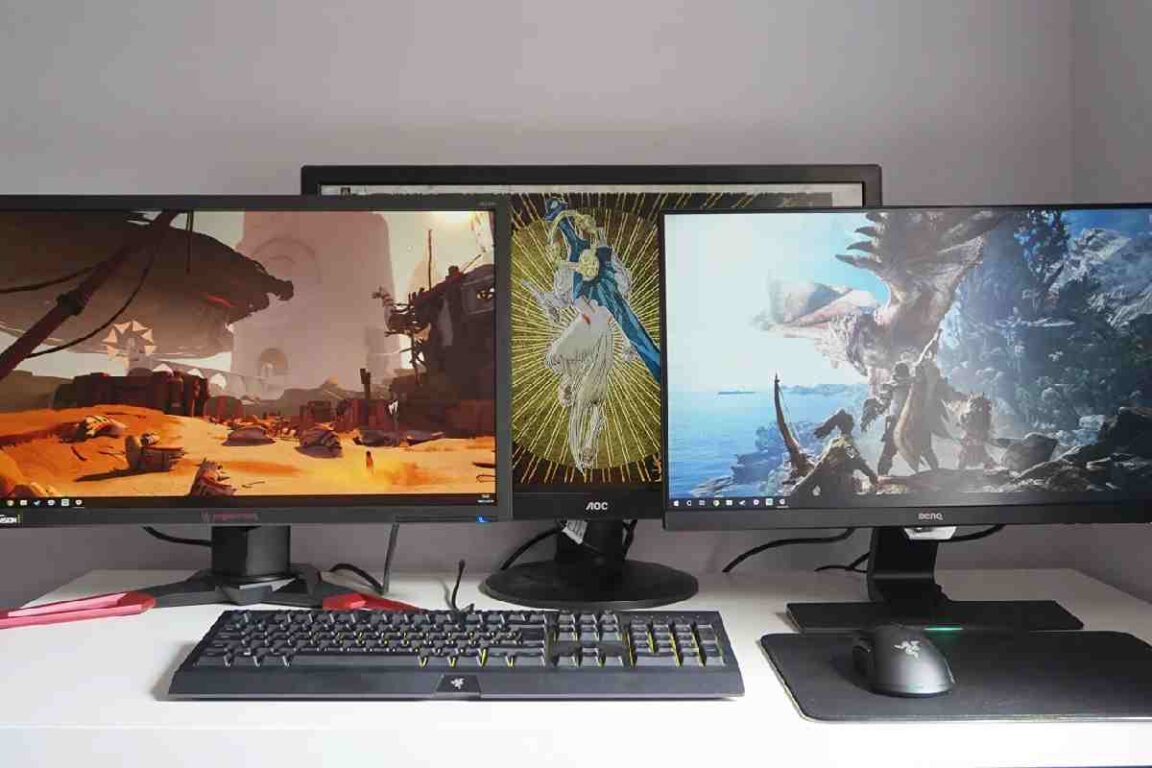A monitor is an electronic output device use to display information being enter and processed on a computer. The primary use of a monitor is to display images, text, video, and graphics information, which is generated by the computer via a computer’s video card. It can be refer to as the primary output device of a computer device. The first monitor display was introduce on 1 March 1973. The monitor is a beneficial device as it helps display the information being process inside the CPU of the computer. It is also known as the VDU, i.e., the Visual display unit.
Evolution of Monitor and Its Different Types
• The first computer display was a feature of the Xerox Alto computer, which was release on March 1 of that year. This monitor utilized CRT technology.
• The 1024×768 resolution display on color CRT displays was supported in the late 1980s.
• Apple was the first company that started producing desktop computer color LCD monitors in 1998.
• LED monitor, with its new-gen technology, was first introduced in 2008.
CRT (cathode ray tube) monitors
These monitors service CRT technology, which was use most frequently in the manufacturing of television screens. With these monitors, a stream of solid and high-energy electrons is use to form images on a luminous screen. A cathode ray tube is mostly a vacuum tube comprehending an electron gun at one end and a luminous screen at another end.
While CRT monitors found in some organizations, many offices have stopped using them primarily because they are heavy, bulky, and costly to replace should they break. While they are still in use. It would be a good idea to phase these monitors out for cheaper, lighter, and more reliable monitors.
LCD (liquid crystal display) monitors
The LCD monitor integrates one of the most advanced technologies available today. Naturally, it consists of a layer of color or monochrome pixels arranged systematically between a couple of transparent electrodes and two differentiating filters. Optical effect is made possible by polarizing the light in mixed amounts and making it pass through the liquid crystal layer. The two types of LCD technology available are the active matrix of TFT and the passive matrix technology. TFT generates better picture quality and is more secure and reliable. Passive matrix, on the other hand, has a slow response time and is slowly becoming old-fashioned.
The advantages of LCD monitors include their compact size, which makes them lightweight. They also don’t consume much electricity as CRT monitors, and run off of batteries which will make them ideal for laptops.
Images transmitted by these monitors don’t get geometrically distorted and have little flicker. However, this type of monitor does have disadvantages, such as its relatively high price. An image quality that is not constant when viewed from different angles, and a monitor resolution that is not always constant. Meaning any alterations can result in reduced performance.
LED (light emitting diodes) monitors
LED monitors are the modern types of monitors on the market today. These are flat panel, or somewhat curved displays which make use of light emitting diodes for back-lighting, instead of the cold cathode fluorescent (CCFL) back-lighting used in LCDs. LED monitors are suppose to use much lesser control than CRT and LCD and are consider faraway more environmentally welcoming.
The advantages of LED monitors are that they produce images with higher contrast, have a less negative environmental impact when disposed of, are more durable than CRT or LCD monitors, and feature a very thin design. They also don’t produce much heat while running. The only downside is that they can be more expensive. Especially for the high-end monitors like the new curved displays that are being release.
Being aware of the different types of computer monitors available should help you choose one that’s most suited to your needs. Looking to learn more about hardware in today’s world? Contact us and see how we can help.
Conclusion
The flat screen itself is, except in laptops, still regarded as an investment item. People are unwilling to buy flats until their existing CRT expires. For reliability, at present, LCDs have the edge over plasma for small screens. But in the giant screen TV market in particular, Plasma is the only option. A 60-inch LG television is currently retailing at £15 000. Which is slightly out of the price range of the regular consumer but certainly is a very desirable item. The future of the flat screen is probably going to be based on the LCD for at least another few years until emissive displays reach their
full potential, both in size and reliability. Unless these factors are significantly more favorable than those of current flat-screen technology. There may be an unwillingness to switch to these materials. If a good performance is obviously, organics will win out due to cost and ease of manufacture. I feel that by the end of the decade, the future of plastic screens will be decide one way or another.


